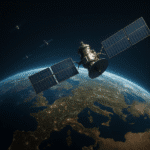The exploration of Mars has been a focal point of space missions for decades, driven by humanity’s curiosity and the quest to understand our neighboring planet. This article delves into the history of Mars missions, highlighting both the remarkable achievements and the notable failures that have shaped our understanding of the Red Planet.
Early Mars Missions: Pioneering Steps
The journey to Mars began in the early 1960s, during the height of the space race between the United States and the Soviet Union. The first attempts to reach Mars were fraught with challenges, as both nations sought to establish their dominance in space exploration. The Soviet Union was the first to attempt a Mars mission with the launch of Marsnik 1 in 1960, but the mission failed to leave Earth’s orbit. Despite this setback, the Soviets persisted, launching several more missions over the next few years, including Mars 1 in 1962, which successfully flew by Mars but lost communication before it could send back data.
In 1964, NASA launched Mariner 4, marking the first successful flyby of Mars. This mission provided the first close-up images of the Martian surface, revealing a barren and cratered landscape. The success of Mariner 4 was a significant milestone, as it demonstrated the feasibility of interplanetary travel and laid the groundwork for future missions. The Mariner program continued with Mariner 6 and 7 in 1969, which provided additional data and images, further enhancing our understanding of Mars.
Viking Missions: A New Era of Exploration
The 1970s marked a new era in Mars exploration with the launch of NASA’s Viking program. Consisting of two spacecraft, Viking 1 and Viking 2, the program aimed to conduct detailed scientific investigations of the Martian surface and atmosphere. Launched in 1975, both Viking landers successfully touched down on Mars in 1976, becoming the first spacecraft to operate on the planet’s surface.
The Viking missions were groundbreaking, as they conducted a series of experiments to search for signs of life on Mars. Although the results were inconclusive, the data collected provided valuable insights into the planet’s geology and climate. The Viking orbiters also mapped the Martian surface in unprecedented detail, identifying potential landing sites for future missions. The success of the Viking program set a high standard for subsequent Mars missions and inspired a new generation of scientists and engineers.
Challenges and Failures: Learning from Setbacks
Despite the successes of the Viking missions, the path to Mars has been fraught with challenges and failures. The 1980s and 1990s saw several high-profile mission failures, including the Soviet Phobos program and NASA’s Mars Observer. The Phobos program, launched in the late 1980s, aimed to study Mars and its moons, Phobos and Deimos. However, both spacecraft experienced technical failures, resulting in the loss of valuable data.
Similarly, the Mars Observer, launched by NASA in 1992, was intended to conduct a comprehensive study of the Martian surface and atmosphere. Unfortunately, communication with the spacecraft was lost just days before it was scheduled to enter Mars orbit. These setbacks highlighted the inherent risks and complexities of interplanetary missions, prompting space agencies to reevaluate their strategies and technologies.
Modern Mars Missions: Renewed Success and Discoveries
The turn of the 21st century marked a renewed focus on Mars exploration, with a series of successful missions that have significantly advanced our understanding of the planet. NASA’s Mars Pathfinder, launched in 1996, was a pivotal mission that demonstrated new technologies for landing and operating on Mars. The mission’s rover, Sojourner, became the first wheeled vehicle to explore the Martian surface, providing valuable data on the planet’s geology and atmosphere.
Following the success of Pathfinder, NASA launched the Mars Exploration Rovers, Spirit and Opportunity, in 2003. These rovers exceeded all expectations, with Opportunity operating for nearly 15 years, far beyond its planned mission duration. The data collected by these rovers provided compelling evidence of past water activity on Mars, suggesting that the planet may have once harbored conditions suitable for life.
In recent years, missions such as the Mars Science Laboratory, featuring the Curiosity rover, and the Mars 2020 mission, with the Perseverance rover, have continued to build on these discoveries. These missions have focused on studying the planet’s habitability, climate, and geology, as well as searching for signs of ancient life. The success of these missions has been bolstered by international collaboration, with contributions from space agencies around the world, including the European Space Agency and the Indian Space Research Organisation.
Future Prospects: The Quest for Human Exploration
As we look to the future, the prospect of human exploration of Mars looms on the horizon. Space agencies and private companies are actively developing the technologies and infrastructure needed to support human missions to the Red Planet. NASA’s Artemis program, which aims to return humans to the Moon, is seen as a stepping stone for future Mars missions. Meanwhile, companies like SpaceX are working on ambitious plans to establish a human presence on Mars, with the goal of making life multiplanetary.
The history of Mars missions is a testament to human ingenuity and perseverance. Each mission, whether successful or not, has contributed to our understanding of Mars and brought us closer to the dream of exploring the planet firsthand. As we continue to push the boundaries of space exploration, the lessons learned from past missions will undoubtedly guide us on our journey to the Red Planet and beyond.










